From the government Minister Miguel José de Azanza to the present day, Aoiz has given the world numerous figures from the arts, literature, sciences, medicine and politics. Personalities from centuries ago to our era.
From the world of arts and literature, we can highlight the university professors Tomás Fermín de Arteta and Francisco Ynduráin, the chef Javier Lacunza Ozcoidi and the doctor Manuel Jimeno Egúrbide. From the world of music, Mariano García. Judges like Joaquín María Miqueleiz Bronte, the director of Vatican Radio Félix Juan Cabasés Cilveti are other famous sons of Aoiz.
Liberal demócrata, fue uno de los promotores de El Demócrata Navarro en 1904, concejal de Aoiz en 1909 y alcalde en dos ocasiones (del 1 de enero de 1895 al 1 de julio de 1897 y del 1 de enero de 1910 al 27 de febrero de 1913). Recibió frecuentes ataques de El Pensamiento Navarro.
Thanks to his insistence and on the proposal of Councillor Agustín Madoz, Pamplona City Council agreed to name a street in the city after our village in 1952.
He died in Arróniz in 1971.
Fue recibidor y encargado en 1518 de contabilizar la administración en la Merindad de Pamplona.
Se le renovó el contrato dos veces hasta mayo de 1699.
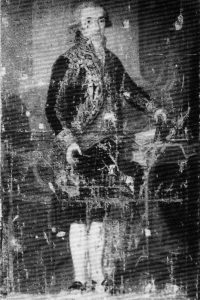 A Navarrese statesman born in Aoiz on the 20th of December 1746 to Pedro de Azanza y Narválaz from Burguete and Juana María AlegrÌía y Egüés, from Aoiz itself. He studied in Pamplona and Sang¸esa before leaving, at the age of 17, for Havana, and then Veracruz and New Spain (Mexico), in the company of his uncle, José Martín de Alegría, an important civil servant and director of the Compañía Guipuzcoana de Caracas.
A Navarrese statesman born in Aoiz on the 20th of December 1746 to Pedro de Azanza y Narválaz from Burguete and Juana María AlegrÌía y Egüés, from Aoiz itself. He studied in Pamplona and Sang¸esa before leaving, at the age of 17, for Havana, and then Veracruz and New Spain (Mexico), in the company of his uncle, José Martín de Alegría, an important civil servant and director of the Compañía Guipuzcoana de Caracas.
At the age of 22, he worked as secretary to the Inspector General of New Spain Gálvez. Following that, he became a cadet in the Lombardy regiment, rising to Second Lieutenant in 1774. In the army, he worked as secretary to the Captain General of the island of Cuba, the Marquis de la Torre, with whom he would later serve defending the siege of Gibraltar (1781) with the rank of Captain. When the Marquis de la Torre was named ambassador to Russia, he took Azanza with him as attaché to the Saint Petersburg Embassy. He went on to work as secretary and then Charge d’Affaires, a post which he also held in Berlin, the capital of Prussia. He returned to the Peninsula, where he worked in Army supplies, no longer in charge of troops. In 1788, he was named Quartermaster and Corregidor of Toro and Salamanca; in 1789, Quartermaster of the Kingdom and the army in Valencia.
In 1793, he became Minister of War, but fell into disgrace for opposing Godoy and was sent as Quartermaster to Rosellón. From this position, he contributed towards the success of General Ricardos in the campaigns against the French Convention (1793). In that same year, he became an honourable member of the Real Sociedad Vascongada de Amigos del País. At the age of 52, he was named Viceroy of New Spain; he took up the post on the 31st of May 1798 and was warmly received because Viceroy Branciforte had concentrated a great many troops in Jalapa, which cost a good deal of money to the New Spanish coffers. Azanza gradually withdrew them, particularly the regiments of provincial militias. With the money saved in this way, the port of San Blas was fortified and armed with cannons, and Azanza was wound up in these matters for the first two years of his office, when, in 1799, the first “Conspiracy of the Machetes”, a Mexican liberation movement, was discovered; Azanza aborted it.
Under his mandate, industry and trade were promoted, particularly the manufacture of silk, cotton and wool, although he did also have to deal with the hurricane which destroyed a good part of Acapulco in July 1799 and the earthquake of March 1800. He returned to Spain in 1800 to take up the post of Counsellor of State until he was banished by Godoy. Following the mutiny of Aranjuez, he was named the Minister of the Treasury of Fernando VII (1808). As a supporter of the French in the peninsular war, he recognised José Bonaparte, whom he loyally supported. José I named him Minister of the Indies and then of Justice, Ecclesiastic Affairs and Foreign Affairs, Royal Commissioner to Granada, Duke of Santa Fe and Knight of the Golden Fleece. He chaired the Board of Dignitaries which drafted the Charter of Bayonne. In 1810, he was sent to Paris as Spanish Ambassador. When the French were thrown out of the country, Azanza, having been condemned to death and having had all his wealth confiscated, fled to France. At the age of 69, he published his Memoirs, which contain interesting historical passages justifying his conduct from 1808 to 1814. He also wrote some unpublished works on north America. At the age of 74, he returned from France thanks to an amnesty, but given that certain animosity still existed with regard the supporters of the French, he decided it would be wiser to live in the neighbouring country. He died in Bordeaux on the 20th of June 1826.
He took part in the I Carlist War on the side of the supporters of María Cristina de Bourbon, reaching the rank of Brigadier and earning several decorations.
Francisco Javier Bayona y Lapeña held the Cross and Plaque of the Royal Military Order of Saint Hermenegild and the Grand Cross of Carlos III.
When the war finished, his life was continually marked by the vicissitudes of politics, in which he sided with the moderate liberal party. The return of absolutism made him the object of “purification” until 1826, in which, no longer in the army, he could at least return to his home town. He was accused of sympathising with Riego and of being a mason.
It was the proximity of the I Carlist War which allowed him to rejoin the army in January 1833 as First Commander of the Fourth Regiment of the Guard. He was posted to Vasconia when war broke out, rising to the rank of Colonel in Biscay. He fought in Guipuscoa and, above all, in Navarre. In 1837, in charge of the Zaragoza Regiment, he was involved in several important confrontations: Allo (14th of September), Alcanadre (3rd of October) and Peral (16th of October), earning the Cross of San Fernando for the latter.
He was promoted to Brigadier in 1838 following his most important action, the Battle of Carrascal (2nd of January), the capture of the Bridge of Belascoain and the Fort of Ciriza. In 1839, having been named Chief of the first district of Navarre by Baldomero Espartero, he took an active part in the defeat of the Carlist troops in the province: Belascoain (29.04 / 2.05); Aoiz, Peña de Atxuri and Meseta de Gendulain; Borunda, Sarasa and Pass of Alzaburu (16th, 27th and 30th of July); Dicastillo (18/19.08); Oteiza, Cirauqui and Mañeru (23/24.08), and the Pass of Belate (13.09).
After the war, he rose to Field Marshall and was named General Commander of Navarre and 2nd Corporal of its Captaincy General, and Senator for Navarre, all in 1840, whilst also aborting a number of Carlist attempts to cross the border from France.
He also fought against the October 1841 uprising in Pamplona. He was Captain General from 1843 to 1844, facing Zurbano’s progressive insurrection in LogroÒo. He was promoted to Lieuetenant General in 1846. In 1848, he was named Captain General of Navarre; his main duties were to rout a Carlist party and organise call-up for the first time since the Civil War.
Political ups and downs saw him live in Madrid for three years until his brother-in-law, the Minister Fermín Arteta, had him sent to the Captaincy General of Galicia in 1851 and to the post of Minister of the Supreme Court of War and the Navy. In 1851, he was named Lifetime Senator to fill the quota of Lieutenant Generals.
After the 1854 revolution, he was relieved, although he was granted a pension. With the return of the Moderates, however, he was named Minister of the Supreme Court of War and the Navy.
He died in Madrid on the 17th of March 1863 with several medals and decorations to his name.
Predicaba con tanto fervor que las m·s importantes ciudades de Aragón y Navarra le procuraban con particular solicitud para que les predicase. Predicó dos cuaresmas en Pamplona, dos en Tudela y otras tantas en Viana, Corella, Estella y Daroca y Borja en Zaragoza.
Fue Superior de los conventos de Daroca, Barbastro, Calatayud y Pamplona. La formación de la Custodia de capuchinos de Navarra, cuyos conventos hasta 1656 estuvieron unidos a Aragón, no estuvo exenta de dificultades. A este respecto, el P. Basilio de Viana nos dice cuáles fueron algunas de esas dificultades: En cuanto a los medios (de hacer la separación) ha habido muchas Controversias, porque no se conformaban los pareceres. Y, en fin, se resolvió que por ahora no tuviese voto en el Capítulo general, y que no se hiciesen en la Custodia más de dos Definidores….
El camino hasta conseguirla Custodia y más adelante la constitución de una Provincia religiosa, independiente y plena, fue muy difícil y hubo que superar muchos obstáculos. Fueron muchos los pasos que tuvieron que dar, comenzando por la solicitud de apoyo cursada a Diputación para llegar luego hasta el mismísimo Felipe IV, al cual le pedían su apoyo para la erección de dicha Custodia. En carta fechada el 8 de diciembre de 1655, comunicaba Felipe IV a su embajador en Roma, el duque de Terranova, que habían llegado a sus manos las suplicas del virrey, del obispo y de la Diputación del Reino para la separación de los capuchinos navarros y para darles un marco jurídico en forma de Custodia independiente…por esperarse que deste medio han de resultar muy huenos efectos en el servicio de Dios y en el consuelo espiritual de los religiosos….
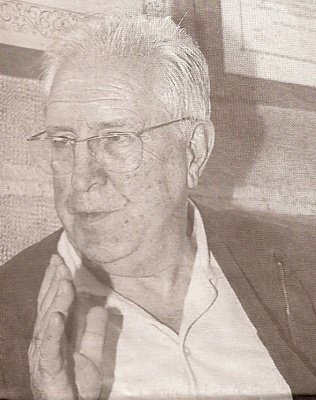 Born in Aoiz on the 5th of November 1930 to the civil engineer of the Sociedad El Irati José Félix Cabasés Muñoz and Juana Cilveti Goiburu. He studied at the College of San Luis in Pamplona and San Francisco Javier in Tudela.
Born in Aoiz on the 5th of November 1930 to the civil engineer of the Sociedad El Irati José Félix Cabasés Muñoz and Juana Cilveti Goiburu. He studied at the College of San Luis in Pamplona and San Francisco Javier in Tudela.
He pursued studies in philosophy and humanities in the Novitiate of Loyola, Veruela (Zaragoza) and Oña (Burgos). In 1953, he left for the Universidad Complutense de Madrid to study Philosophy and Arts, specialising in Romance Languages, graduating in 1958.
In 1958, he returned to Oña, this time to study Theology. After his first two years, he moved to the University of Innsbruck (Austria) to continue his studies. He graduated in Theology, one of his teachers being the well-known theologian Karl Rahner. He was ordained on the 26th of July 1961.
In 1963, he went to Rome to the Pontifical Biblical Institute, where he obtained a Bachelor’s in Holy Scripture in 1965. He went on to Deusto for one year as a teacher and then editor of the magazine Mensajero until 1974.
In 1974, he returned to Rome and wrote for Vatican radio before being named its Head in 1978.
Cursa sus estudios en la Escuela Apostólica de Javier. Una vez finalizados, ingresa en la Compañía de Jesús, en el Noviciado de Carrión de los Condes, el 30 de junio de 1916.
Al terminar en OÑA Burgos la carrera de Filosofía y Letras, es destinado a Colombia.
Apenas desembarcado, cae víctima de la fiebre amarilla que entonces hacía estragos en aquellas naciones tropicales. Se alegró mucho en Bogotá al ser destinado como profesor al Colegio San Pablo Claver de Bucaramanga, no lejos de la Pamplona de Colombia.
Su naturaleza, ya de suyo débil, no resistió el ataque y todos los cuidados para salvar su vida fueron inútiles. Murió a las 10 horas del dia 24 de agosto de 1923, a los 24 años de edad.
Pese a que su vida fue breve, fué muy considerable la labor social y humanitaria que desarrolló Don Teodoro Cía Úriz.
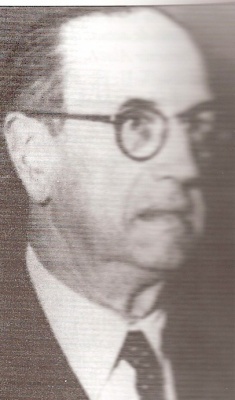 Lawyer and intellectual born in Aoiz on the 20th of January 1882. Studied Law at the University of Zaragoza, going on to belong to the Association of Lawyers of Pamplona. He attended a number of general congresses in representation of the association and particularly the one held in Seville in 1929.
Lawyer and intellectual born in Aoiz on the 20th of January 1882. Studied Law at the University of Zaragoza, going on to belong to the Association of Lawyers of Pamplona. He attended a number of general congresses in representation of the association and particularly the one held in Seville in 1929.
From 1909, he was Secretary of the Regional Government of Navarre, a post which he left, although he did continue as one of its legal advisors. He was a Councillor in Pamplona City Council and a member of P.N.V. In 1931, he participated in the drafting of the Basque Statute as representative of Navarre in the Society of Basque Studies. In 1936, he went into exile, taking up residence in Buenos Aires. There, he worked as translator for large publishing houses, translating a body of work significant for both its quantity and its volume. We can list, for example: Danza para tu sombra! (1946), by J. H. Louwyck; La influencia del cristianismo en el derecho civil romano (1947), by M. Troplong; El cuerpo y el alma, by RenÈ Biot; Introducción filosófica al estudio del Derecho, by Georges Renard (2 volumes); Salud humana (1948), by René Biot; La Nación, by J. T. Delos (2 volumes); Las grandes amistades (1950), by Raisa Maritáin (2 volumes); Al servicio de la persona humana (1951), by René Biot, and, above all, between 1951 and 1952, his greatest work, the 3,500 pages of Derecho Civil, by Louis Josserand (6 volumes). He contributed to Eusko-Deia, Buenos Aires, and wrote the prologue to Arturo Campión’s novel Blancos y Negros, published in Buenos Aires. He died on the 16th of January 1953.
Personajes ilustres con este apellido:
GARCÍA GARCES de Aoiz: acompañó a Sancho el Fuerte en la Batalla de las Navas de Tolosa, en 1212.
SALVADOR de Aoiz: era Alcalde de la Navarrería en Pamplona en 1264.
LOPE MARTÓNEZ DAOIZ: consejero de la comarca de Arteaga en 1299.
Alcalde del Tribunal de la Corte en 1501. Figura en el mismo cargo en 1519, resistiendo a todas las vicisitudes polÌticas de aquellos años.
As a boy, his idols were Retegi II and Galarza III. Patxi Eugui, champion of hand pelota doubles alongside Azkarate at the Cuba world championships, played his first professional game on the 5th of July 1991 in Pamplona’s Fronton Labrit at the age of just 19, denying himself the chance to win a medal at the 1992 Barcelona Olympic Games, at which he was set to be favourite. He won his first txapela in the Four-and-a-Half Championship in 1992, a year on from his professional debut. The Navarrese forward lived his finest years in the hand pelota championship between 1996 and 2001, winning three titles (1996, 1999 and 2000) and two second places (1998 and 2001).
That is to say, he only missed the final in 1997, which was finally battled out between Arretxe and Elkoro. Injuries have defeated me more than my rivals; he once stated and the fact is that, due to the exacting nature of the sport, he has suffered hand, pubis, elbow and knee injuries, being operated on five times. He retired from the frontons with three hand pelota and three four-and-a-half txapelas, having finished runner-up in the Doubles Championship alongside the great Joxe Mari Zezeaga. And he did so in Aoiz’s Toki Eder fronton on the 10th of August 2008.
The house of Mariano’s birth, with a sculpted stone and a semicircular doorway, is in Calle Las Eras, number 22. The house was reproduced in the Pamplona-published magazine, La Avalancha (issue 56, of the 8th of July 1897, P. 235). The War of Independence saw Miguel García being taken to France by Napoleon’s troops, his wife and all his children having to take refuge in Pamplona.
Mariano was admitted to Pamplona Cathedral Infants School as a boarder on the 18th of June 1817 at the age of 8: Mariano García was tested and admitted as infant… (3), He studied singing and music theory with the contemporary of Eslava, the priest and bassoon teacher from Zaragoza cathedral, Mateo Jiménez, and composition with José Guelbenzu. He coincided with Hilarión Eslava, two years his elder, and they lived together there until 1825.
He studied composition with Guelbenzu (Juan’s father, José, the pianist who came to form part of the great Navarrese generation of Sarasate, Gayarre, Zabalza…) (4).
___________
(1) Arch. Parroq. de Aoiz, Bautizados, Libros 4º y 5º, desde 1763 a 1869, fols. 249 v., 33, 51.
(2) Arch. Parroq. de Aoiz, Casados, Libro 5º, desde 1794 a 1885, fol. 13.
(3) Arch. Cat. de Pamplona, Acuerdos Cap., Libro 9º, desde 1815 a 1827, fol. 140.
(4) Cita de Alberto Fraile.
In 1738, his translation of the original French book by the Bishop Soissons, later Archbishop of Sens, Jean Joseph Languet, El triunfo del Sagrado Corazón de Jesús en la admirable vida de la V. M. Sor Margarita Alacoque, Religiosa de la visitación de Santa María en el Convento de Paray, de quien se sirvió Dios para establecer la devoción del Sagrado Corazón was printed in Pamplona. Ref. Antonio Pérez Goyena: “Ensayo de Bibliografía Navarra”, III, P. 444 onwards.
He died in Aoiz on the 25th of September 1775.
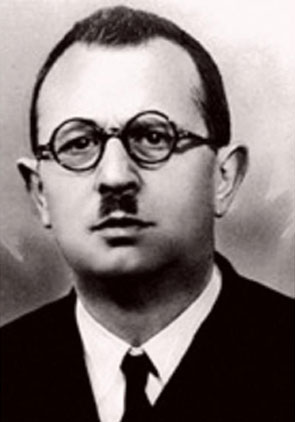 Doctor born in Aoiz on the 26th of October 1856. Died in Pamplona on the 6th of March 1937. When he finished his medical degree, he set himself up in Pamplona (1884) as a specialist in paediatrics and gynaecology. In 1891, he became a doctor at Pamplona Hospital, being named doctor in the hygiene section two years later.
Doctor born in Aoiz on the 26th of October 1856. Died in Pamplona on the 6th of March 1937. When he finished his medical degree, he set himself up in Pamplona (1884) as a specialist in paediatrics and gynaecology. In 1891, he became a doctor at Pamplona Hospital, being named doctor in the hygiene section two years later.
In 1899, he was chosen as provincial health inspector and, then (1901), Sub-delegate of Medicine of Pamplona and district. Finally, in 1905, he took the post of Health Inspector of Pamplona. He restless spirit led him to direct the newspaper El Liberal Navarro; he founded and directed the fortnightly magazine Clínica Médica; he was behind the institution known as the Gota de leche, and was one of those who most worked for the Regional Medical Congress of Navarre. Another of his contributions to medicine was the invention of a field bed.
In 1896, the Spanish Surgical-Medical Academy awarded him a prize for a Memoria sobre cirugía del estómago. Two years later (1898), he was awarded the Cross of Isabel the Catholic. He released several medical publications, including: Algunos datos etiológicos sobre la llamada parotiditis epidémica, Pamplona, 1883; Instrucción popular. Consejos generales para prevenir la infección del cólera, Pamplona, 1885; El Congreso Médico Regional de Navarra, Pamplona, 1886; Prontuario de cirugía asepto-antiséptica. La cirugía moderna, sus principios, procedimientos y resultados, Barcelona, 1890; Higiene pública. La desinfección en las pequeñas localidades por medio de un procedimiento sencillo, económico y eficaz, Pamplona, 1899; La desinfección en Pamplona, Pamplona, 1906; Colonias escolares de vacaciones, Pamplona, 1915. In addition to these medical publications, he also had short literary contributions published: El viajero, Pamplona, 1883; Entremés. La burla del posadero, Pamplona, 1885; Entremés famoso del zapatero sordo, Pamplona, 1885; Vino… navarro! Casi monólogo en verso…, Pamplona, 1888; La mía!, Pamplona, 1899. Finally, he published El Santuario de San Miguel de Excelsis. Su tradición y su historia. Compendio extractado de diversas obras por un navarro, Pamplona, 1894. Ref. Pérez Goyena: Ensayo de Biografía Navarra, t. VIII, Pamplona, 1962, P. 374-376; Jon Bilbao: Bibliografía, Enciclopedia General Ilustrada del País Vasco.
El 19 de abril de 1729, se encontraba ya en Buenos Aires. Pasa a Córdoba (Argentina) y allí, el 3 de diciembre de 1734, hacía la profesión solemne.
Además de Misionero y los ministerios propios, fue nombrado Socio del Padre Provincial el año 1743. Se alaba de él sus muchas cualidades. Dejó un Memorial para el Superior de Misiones, muy útil, el año 1752. El 12 de agosto de 1767 lo destinaron a La Rioja (Argentina), donde tuvo que sufrir la expulsión de todos los jesuitas de las Misiones, por Carlos III. Por ello, es desterrado a Italia, y en Faenza le llega la muerte el día 28 de marzo de 1772, a los 73 años de edad.
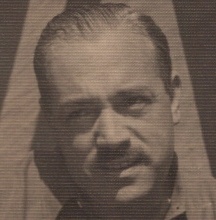 Industrialist in the film world born in Aoiz on the 7th of October 1899. He is one of the very few people from Navarre to appear in the Motion Picture and Television Almanac which Quigley published in New York. A man of finance, he held a high post in the Banco Avellaneda, inspector general and general manager.
Industrialist in the film world born in Aoiz on the 7th of October 1899. He is one of the very few people from Navarre to appear in the Motion Picture and Television Almanac which Quigley published in New York. A man of finance, he held a high post in the Banco Avellaneda, inspector general and general manager.
From Buenos Aires, he moved to the United States where he discovered and took an interest in the film world. Back in Buenos Aires, he founded the San Miguel Film Studios, which he both managed and owned. He was also a noteworthy member of the Argentinean Association of Film Producers and the Argentinean Academy of Film Arts and Sciences. He was named Chairman of the Distribuidora Panamericana.
He died in Buenos Aires on the 4th of April 1975.
Ingresa en la Compañía de jesús el 17 de mayo de 1738, en el Noviciado de Villagarcía de Campos y hace la profesión solemne el 15 de agosto de 1758.
Catedrático de Humanidades en diversas ciudades del norte de España, especialmente en Valladolid. Posteriormente enseña Teología Moral en San Sebastián.
En el Catálogo de 1766-67, que salió poco antes de la expulsión de los jesuitas del territorio español, figura en Pamplona con los títulos de Operario, Prefecto de la Congregación del Sagrado Corazón de Jesús y Confesor en el templo de la calle Compañía.
Desterrado a Italia, murió según el P. Luengo, en Suma pobreza en Fano, el 27 de marzo de 1800. En la Biblioteca de Jesuitas Españoles, compuesta por el P. Uriarte se reseñan así las obras de Miguel Ozáriz Iriarte:
El Epítome Cronológico de todos los gran-maestres de la Sagrada Religión de San Juan de Jerusalén, que ahora se llama de Malta.
Pamplona, 1766, Imprenta de Antonio Castilla. Trata de setenta héroes, no sólo grandes, sino de los mayores del mundo. Y avisa que se sacó este Epítome de sus historias…
Manuscritos
Dejó los siguientes manuscritos:
- Compendio de la Gramática Latina, sacado de los más clásicos autores, para el uso de las Escuelas de la compañía.
- Cursus Philosophicus tribus partibus distinctus et triennio accommodatus, 4 tomos de 46, 98, 135 y 120 hojas.
- Historia de la Sagrada Religión de los Caballeros de San ]uan de Malta, 2 tomos de 204 y 189 hojas.
- Compendio de Historia General de España, de 643 hojas.5. Cuatro Sermones, que conforman un tomo de 844 páginas.6. Tres cartas al H. Juan de Iturrioz.7. Virtudes de la piedra de San Pablo y de las lenguas y ojos de las sierpes que se hallan en la Isla de Malta (Pliego en folio).
Era el propietario de la prestigiosa imprenta La Minerviana. Al finalizar la guerra civil se vio obligado a abandonar España, para volver en 1948.
Tres años mas tarde moriría a la edad de 68 años.
She died in Barcelona in 1949.
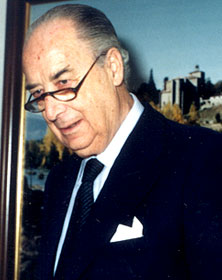 Philologist and Historian of Literature born in Aoiz on the 25th of June 1910. He studied Philosophy and Arts in Salamanca, graduating in 1933 with an Extraordinary Award and later earning a doctorate in Madrid. He taught at Salamanca University from 1935 (he was Unamuno’s assistant) until 1940, when he accessed the seat of Spanish Language and Literature at the University of Oviedo. In 1942, he moved to Zaragoza, where he worked for thirty years.
Philologist and Historian of Literature born in Aoiz on the 25th of June 1910. He studied Philosophy and Arts in Salamanca, graduating in 1933 with an Extraordinary Award and later earning a doctorate in Madrid. He taught at Salamanca University from 1935 (he was Unamuno’s assistant) until 1940, when he accessed the seat of Spanish Language and Literature at the University of Oviedo. In 1942, he moved to Zaragoza, where he worked for thirty years.
In the capital of Aragon, he contributed to El Noticiero as literary critic, holding the post of Vice-deacon of Arts and Vice-rector of the University. In 1972, he went to the Universidad Complutense de Madrid, where he started a second stage of teaching. He became the rector of the Universidad Internacional Menéndez Pelayo. He became a corresponding member of the Royal Spanish Academy (1966) and the Academy of History (1968). Board member of the CSIC (1956), Instituto Cervantes, Universidad Hispanoamericana de Los ¡ngeles (1965) and Fundación Juan March. He was a tutor of Juan Carlos I in his first period as student. Speaker at conferences in USA, throughout Europe, Morocco, etc. and at different congresses, such as the International Congress of Spanish-language writers (Las Palmas) in 1979.
In 1992, he received a tribute from his home town, which dedicated a street to him and named him favourite son of the Burgh. In 1994, he received the Prince of Viana prize, awarded by the Navarrese Council of Culture, on the proposal of Aoiz’s Bilaketa group. His love of Navarre and Basque culture were great. A specialist in, among other subjects, the Golden Age and Baroque of Spanish literature, he stood out as a pioneer in the study of modern Spanish-language, French, English and American literature. Conference speaker, article and prologue writer (the latter on Unamuno, García Lorca, Areilza, etc.), a man with great intellectual curiosity, an affable scholar and humanist, he wrote many works, including Por qué nos gusta el Quijote? (1942); El dialecto navarro-aragonés antiguo (1946); Notas lexicales (1947); El Quijote y Don Quijote (1950); España en la obra de Hemingway (1952); La novela norteamericana en los últimos 30 años (1952); Novelas y novelistas españoles (1936-1952) (1952); La obra de William Faulkner (1953); Mística y poesía en San Juan de la Cruz (1953); Resentimiento español: Arturo Barea (1953); El pensamiento de Quevedo (1954); Una nota a Celestina (1954); Refranes y frases hechas en la estimativa literaria del s. XVII (1955); Lope de Vega como novelador (1962); Obras dramáticas de Cervantes (1962); Sobre le nouveau roman (1967); Relección de cl·sicos (1969), an outstanding classic in the genre; Galdós, entre la novela y el folletín (1970); De lector a lector (1972); Literatura de España (1973); Baroja el Novelista (1974); Hacia una poética de Juan Ramón (1978); Francisco García Pavón (Madrid, 1982) and Los Moriscos y el teatro en Aragón (1986). His editions of classic works also deserve mention (e.g. Gracián, Braulio Foz), with thorough footnotes and carefully thought comments, as do his Clásicos modernos (1969), with a innovative look at the poetry of Unamuno. He also warmly encouraged young writers, such as Gabriel Celaya of the 50s, who had an enthusiastic critic and reader in Ynduráin. He died in Madrid on the 25th of October 1994 and was buried in Benavente (Zamora) alongside his wife.
Such was the enthusiasm for motorless flight in Jaca, that Zabalza, a young man very fond of the pursuit, soon formed part of local flying circles and worked hard to found the Aeroclub de Jaca on the 10th of May 1931. The club was based at the Bar Ócaro, at number 20, Calle Mayor.
So dedicated were Zabalza and his two brothers to motorless flight, that, together with other young men from the town, they even built two gliders, for which they needed drawings which his elder brother brought back from Germany.
It can be said that motorless flight in Jaca is due, to a large part, to Alfonso Zabalza and his two brothers.
In the period of barely two years which Zabalza spent in Jaca, he took part in the construction of two gliders, using German diagrams. These were single-seaters and were very easy to handle, with just two controls: the tail and the ailerons. The gliders were launched using skids, fitted instead of conventional wheels.
The accident which led to the death of Alfonso Zabalza took place on the 22nd of May 1932 on the esplanade between Sabiñánigo and Jaca, just a few kilometres from the latter. On the afternoon of the 22nd of May, Zabalza was piloting the glider christened Jaca. He rose some 20 metres and then performed a strange manoeuvre and dived to the ground, the force of impact leading him to lose consciousness. This happened at five o’clock in the afternoon. Adverse weather conditions for flight would seem to be responsible.
He was taken to his home and was treated by the local doctor, but, despite the attention received, he died at about 9 o’clock on the same day. His death certificate states that he died of brain trauma and haemorrhage.
Informed of the fatal accident, Alfonso’s parents left Burgui, where his father worked as doctor, for Jaca.
The funeral monument which his friends from the Aeroclub paid for stands in the Jaca cemetery. It bears the following inscription:
ALFONSO ZABALZA ELORGA
THE FIRST SPANIARD TO GIVE HIS LIFE
TO THE SCIENCE OF
MOTORLESS AVIATION
AT THE AGE OF TWENTY-THREE
THE 22nd OF MAY 1932
